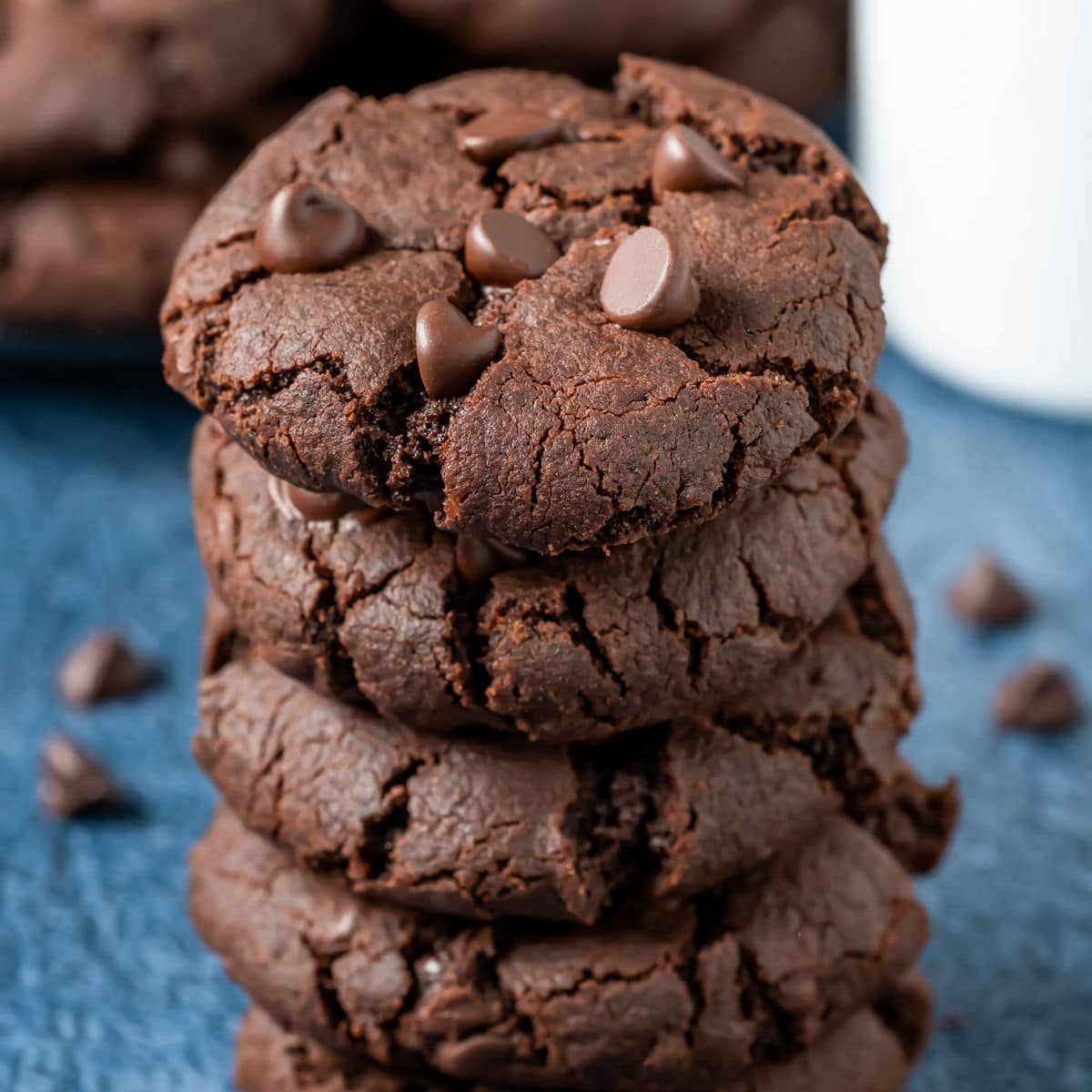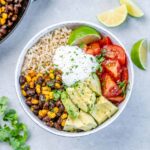Craving a sweet treat without spending hours in the kitchen? Imagine warm, gooey cookies bursting with flavor, ready in a mere 30 minutes. This isn’t a dream; it’s the reality offered by these delightful vegetarian cookie recipes. We’ll explore three unique flavor profiles, from classic chocolate chip oatmeal to adventurous spiced ginger, providing adaptable recipes perfect for any skill level. Learn essential baking techniques to ensure perfectly chewy or crispy cookies every time, and discover creative presentation ideas to wow your friends and family. Get ready to embark on a delicious baking adventure!
From mastering the perfect cookie texture to exploring creative flavor combinations and stunning presentation techniques, this guide provides everything you need to become a vegetarian cookie baking whiz. We’ll cover ingredient substitutions for common allergies, troubleshoot common baking problems, and even offer tips for capturing Instagram-worthy photos of your culinary creations. Prepare to be amazed by how simple and rewarding making these delicious cookies can be.
Quick & Easy Vegetarian Cookies
These three recipes offer delightful vegetarian cookie options, perfect for satisfying your sweet tooth without spending hours in the kitchen. Each recipe is designed for quick preparation, taking under 30 minutes from start to finish, making them ideal for busy weeknights or spontaneous baking sessions. The recipes are adaptable, allowing for experimentation with different flours to cater to various dietary needs and preferences.
Oatmeal Raisin Cookies
These classic cookies offer a comforting and familiar taste. The warm spices complement the sweetness of the raisins perfectly. The recipe is easily adaptable to use different types of flour, creating variations in texture and flavor.
Ingredients:
- 1 cup rolled oats
- 1/2 cup all-purpose flour (or substitute with almond flour or oat flour)
- 1/2 cup brown sugar
- 1/4 cup vegetable oil
- 1/4 cup milk (any kind)
- 1 teaspoon baking soda
- 1/2 teaspoon ground cinnamon
- 1/4 teaspoon ground nutmeg
- 1/2 cup raisins
Instructions:
- Preheat oven to 350°F (175°C). Line a baking sheet with parchment paper.
- In a large bowl, combine oats, flour, brown sugar, baking soda, cinnamon, and nutmeg.
- Add vegetable oil and milk, mixing until just combined. Do not overmix.
- Stir in raisins.
- Drop by rounded tablespoons onto the prepared baking sheet.
- Bake for 10-12 minutes, or until golden brown.
- Let cool on the baking sheet for a few minutes before transferring to a wire rack to cool completely.
Peanut Butter Chocolate Chip Cookies
These cookies offer a rich and decadent flavor combination, balancing the salty peanut butter with the sweetness of chocolate chips. The use of peanut butter adds a unique texture and moistness.
Ingredients:
- 1/2 cup peanut butter (smooth or crunchy)
- 1/2 cup brown sugar
- 1/4 cup vegetable oil
- 1 egg replacement (1 tbsp flaxseed meal mixed with 3 tbsp water)
- 1 teaspoon vanilla extract
- 1 cup all-purpose flour (or substitute with almond flour or oat flour – reduce liquid slightly if using almond flour)
- 1/2 teaspoon baking soda
- 1/2 cup chocolate chips
Instructions:
- Preheat oven to 375°F (190°C). Line a baking sheet with parchment paper.
- In a large bowl, cream together peanut butter and brown sugar.
- Add oil, egg replacement, and vanilla extract; mix well.
- Stir in flour and baking soda until just combined.
- Fold in chocolate chips.
- Drop by rounded tablespoons onto the prepared baking sheet.
- Bake for 8-10 minutes, or until edges are lightly golden.
- Let cool on the baking sheet for a few minutes before transferring to a wire rack to cool completely.
Coconut Macaroons
These delicate cookies are naturally sweet and subtly chewy, with a delightful coconut flavor. They are incredibly easy to make and require minimal ingredients.
Ingredients:
- 1 (14-ounce) can sweetened shredded coconut
- 1/2 cup granulated sugar
- 1/4 cup milk (any kind)
- 1 teaspoon vanilla extract
- 1/4 teaspoon salt
Instructions:
- Preheat oven to 350°F (175°C).
- Line a baking sheet with parchment paper.
- In a large bowl, combine coconut, sugar, milk, vanilla extract, and salt.
- Mix well until everything is thoroughly combined.
- Drop by rounded tablespoons onto the prepared baking sheet.
- Bake for 12-15 minutes, or until golden brown.
- Let cool on the baking sheet for a few minutes before transferring to a wire rack to cool completely.
Flour Substitution Tips
When substituting flours, remember that different flours have different properties. Almond flour, for instance, absorbs less liquid than all-purpose flour, so you may need to adjust the amount of liquid in the recipe accordingly. Oat flour can make cookies slightly denser. Experiment to find your preferred consistency.
Recipe Comparison
| Recipe | Key Ingredients | Flour Type (Adaptable) | Approximate Prep Time |
|---|---|---|---|
| Oatmeal Raisin | Oats, Raisins, Brown Sugar | All-purpose, Almond, Oat | 15 minutes |
| Peanut Butter Chocolate Chip | Peanut Butter, Chocolate Chips, Brown Sugar | All-purpose, Almond, Oat | 15 minutes |
| Coconut Macaroons | Shredded Coconut, Sugar | N/A | 10 minutes |
Flavor Combinations and Variations
Vegetarian cookies offer a delightful canvas for creative flavor explorations, allowing for both familiar comfort and exciting new taste experiences. The versatility of vegetarian ingredients opens up a world of possibilities, limited only by your imagination. By carefully selecting spices, extracts, and complementary ingredients, you can craft cookies that are both delicious and uniquely satisfying.
The careful balance of flavors is key to creating memorable vegetarian cookies. The right spice can elevate a simple recipe to something extraordinary, while the wrong one can easily overpower the other ingredients. Similarly, extracts add depth and complexity, enhancing the overall taste profile and creating a truly unique cookie experience.
Chocolate Chip Oatmeal Cookies with a Hint of Cinnamon
These cookies combine the classic comfort of chocolate chip oatmeal cookies with a warm, inviting spice. The rich, dark chocolate chips melt beautifully into the chewy oatmeal base, creating a delightful textural contrast. A subtle addition of ground cinnamon enhances the sweetness of the chocolate and the hearty warmth of the oats. Consider adding a pinch of cardamom for an extra layer of complexity, creating a subtly floral and aromatic note that complements the cinnamon beautifully. The visual effect would be a deep brown cookie speckled with dark chocolate chips, the warm hues of the cinnamon and cardamom subtly enhancing the overall appearance.
Peanut Butter Banana Cookies with a Touch of Maple Extract
These cookies offer a vibrant combination of peanut butter’s nutty richness and banana’s sweet creaminess. The creamy peanut butter provides a robust base, while the mashed banana adds a natural sweetness and moisture. A touch of maple extract enhances the natural sweetness of the banana, adding a subtle caramel-like depth. Imagine the cookies as a golden brown, with visible flecks of banana throughout, the warm color reflecting the rich flavor profile. The aroma alone would be enough to entice any cookie lover.
Spiced Ginger Cookies with Crystallized Ginger
These cookies deliver a bold and invigorating flavor profile. The warm, spicy notes of ginger are beautifully complemented by the addition of crystallized ginger, which provides a delightful textural contrast and intensifies the ginger flavor. Consider incorporating a pinch of ground cloves and allspice for a deeper, more complex spice profile. A dash of orange zest would add a bright citrus note, cutting through the spiciness and adding a refreshing element. The visual would be a warm, reddish-brown cookie studded with bright, translucent pieces of crystallized ginger, their sparkling texture hinting at the delightful crunch within.
The following variations offer delicious alternatives and cater to different dietary needs:
- Nut-Free Chocolate Chip Cookies: Replace peanuts with sunflower seed butter in peanut butter cookies, or use sunflower seeds for added texture and flavor in other recipes.
- Gluten-Free Oatmeal Cookies: Substitute gluten-free all-purpose flour for regular flour in oatmeal cookie recipes. Experiment with different gluten-free flour blends to find the best texture and flavor.
- Vegan Peanut Butter Cookies: Use vegan butter and ensure your peanut butter is made without dairy ingredients.
- Dairy-Free Spiced Ginger Cookies: Replace butter with a vegan butter alternative such as coconut oil or a plant-based margarine.
- Soy-Free Chocolate Chip Cookies: Ensure your chocolate chips and other ingredients are certified soy-free.
Baking Techniques and Tips for Success

The key to perfectly delicious vegetarian cookies lies not just in the ingredients, but in the precision and technique employed during the baking process. Careful attention to detail at each stage ensures that your cookies achieve the desired texture, flavor, and overall appeal. From measuring ingredients accurately to understanding the nuances of oven temperature and baking time, mastering these techniques will elevate your baking game.
Precise measurements are paramount in baking, unlike cooking where some flexibility is often acceptable. In cookie baking, even slight variations in the amounts of flour, sugar, or butter can significantly impact the final outcome. Too much flour can result in dry, crumbly cookies, while too little can lead to overly spread-out, flat cookies. Similarly, the correct ratio of butter to sugar determines the chewiness or crispness. Using a kitchen scale for measuring ingredients, particularly dry ingredients, ensures the most accurate results. For wet ingredients, use measuring cups and spoons, ensuring they are level and not overfilled. The mixing technique also plays a crucial role. Overmixing can develop the gluten in the flour, resulting in tough cookies. Gentle mixing until just combined is generally recommended.
Ingredient Measurement and Mixing Techniques
Achieving the optimal texture in your vegetarian cookies hinges on the accuracy of ingredient measurements and the gentleness of the mixing process. Using a kitchen scale for dry ingredients like flour and sugar ensures consistency and prevents variations that can affect the cookie’s texture. For example, a difference of even a tablespoon of flour can lead to a noticeable change in the final product – a slightly drier cookie compared to the recipe’s intended texture. Similarly, using measuring cups and spoons for wet ingredients, and ensuring they are leveled, helps avoid variations in liquid amounts, which impact the overall consistency of the dough. Gentle mixing, using a spatula or a wooden spoon, is key to preventing the development of excess gluten in the flour. Overmixing leads to tough cookies, while undermixing can result in unevenly distributed ingredients. Imagine the visual difference: a cookie with a perfectly smooth surface and even distribution of ingredients versus one with visible clumps of flour or sugar. The former represents the result of careful measurement and gentle mixing.
Troubleshooting Common Baking Issues
Several common issues can arise during cookie baking. Over-baking is a frequent problem, resulting in dry, hard cookies. This is often caused by too high an oven temperature or extended baking time. The solution is to carefully monitor the cookies during baking and to reduce the temperature or baking time slightly in subsequent batches. Conversely, cookies spreading too thin during baking is usually due to an insufficient amount of flour or too much butter. Adding a little more flour to the dough or reducing the butter slightly can remedy this. Under-baked cookies, on the other hand, will be soft and gooey in the center. Increasing the baking time slightly, while carefully monitoring for browning, is the solution. A visual comparison would highlight the difference between a perfectly baked cookie with a slightly golden-brown edge and a soft, underbaked center, versus a dry, overbaked cookie that is hard and brittle.
Achieving Desired Cookie Texture
The desired texture, whether chewy or crispy, is largely determined by the balance of ingredients and baking parameters. For chewy cookies, a higher ratio of sugar to flour, along with a slightly lower baking temperature and slightly longer baking time, is generally recommended. The sugar helps retain moisture, contributing to a soft, chewy texture. The longer baking time allows for the development of moisture within the cookie. Conversely, for crispy cookies, a higher ratio of flour to sugar, along with a higher baking temperature and shorter baking time, is typically preferred. The higher temperature promotes faster browning and crisping of the cookie edges, while the shorter baking time prevents the interior from becoming overly soft. Imagine the contrast: a soft, yielding chewy cookie compared to a crisp, shatteringly delicate cookie. Both textures offer distinct sensory experiences, highlighting the impact of baking time and temperature on the final product.
With a little practice and these easy-to-follow recipes, you’ll be whipping up batches of these delectable vegetarian cookies in no time. Remember to experiment with different flavors and techniques – the possibilities are endless! Whether you’re a seasoned baker or just starting out, these recipes provide a fun and satisfying way to indulge your sweet tooth while exploring the creative world of vegetarian baking. So, gather your ingredients, preheat your oven, and get ready to bake up a storm of deliciousness!
General Inquiries
Can I freeze these cookies?
Yes! Freeze baked cookies in an airtight container for up to three months. Allow them to thaw at room temperature before serving.
What if my cookies spread too thin?
Chill your cookie dough for at least 30 minutes before baking. This helps firm up the butter and prevents excessive spreading.
Can I use different types of chocolate chips?
Absolutely! Dark chocolate, milk chocolate, white chocolate – experiment to find your favorite combination.
Are these recipes suitable for children to help bake?
Yes, with adult supervision, children can easily participate in measuring ingredients and mixing the dough.


